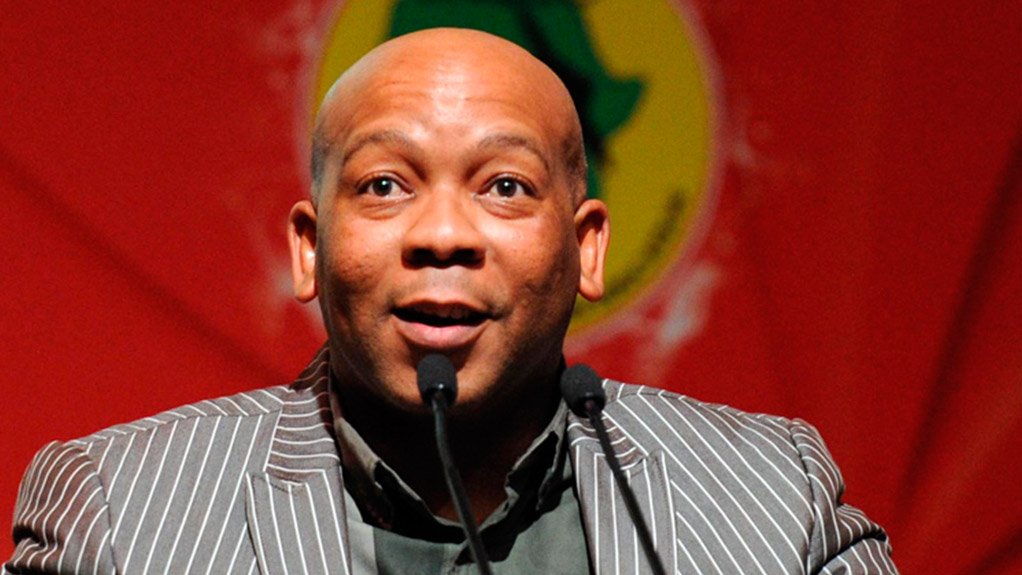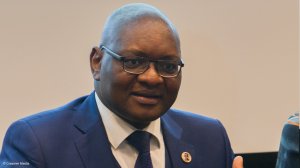Presenting a “balance sheet” of the capital city’s shortcomings and achievements, Tshwane executive mayor Kgosientso Ramokgopa on Thursday delivered his State of the Capital Address (SoCA) at the city’s iconic Freedom Park, underlining achievements made in the roll-out of free WiFi, business incentivisation, integrated transport networks and “mega” infrastructure projects in the metropole over the last year.
Addressing members of the mayoral committee, Gauteng Premier David Makhura and the media, among others, Ramokgopa reported that, since the deployment of Phase 1 of Tshwane’s free WiFi network in 2013, the city had established the capacity to serve over two-million users across 575 sites, with a further 50 sites to be deployed by the end of the current financial year.
Average traffic on the network now tallied 152 000 users a month, representing a growth rate of 278.8% year-on-year, he asserted.
“The provision of free access to the Internet promotes social inclusion, stimulates inclusive growth and supports learning through access to educational material.
“[This is] the fruition of a dream that many South Africans share – that Internet access be made available to the poor, thereby contributing towards bridging the digital divide,” he commented.
Noting, however, that only 14.7% of Tshwane citizens were currently within walking distance of free WiFi sites, Ramokgopa on Thursday announced that the city would, over the next 18 months, deploy a further 1 848 sites, thus ensuring that, by the end of 2016, all Tshwane citizens were within walking distance of free WiFi.
“The city’s vision is to eventually provide WiFi connectivity on every street, on every corner and in every household in the capital city,” he said.
INVESTMENT INCENTIVES
Elaborating on the city’s efforts to promote trade and investment, Ramokgopa noted that the Tshwane Economic Development Agency continued to undertake export-readiness programmes for small, medium-sized and microenterprises (SMMEs) and had assisted over 100 SMMEs in this regard in the past year.
He added that the city had responded to a call from business to create an investor-friendly environment by concluding a public participation process on the drafting of development investment incentives.
“This policy will enable the city to provide specific rebates on certain developments within Tshwane,” he said, adding that the city had established a high-level Strategic Investment Committee to institutionalise this mechanism and expedite strategic developments.
Moreover, the city would, over the next 15 years, focus its trade promotion efforts on the knowledge economy, agriculture and agroprocessing, business and diplomatic tourism and the green economy.
Each of these sectors would be allocated an implementation plan – currently under development – that detailed short-, medium- and long-term interventions.
“We will continue to support our remaining traditional sectors, such as the automotive, mining, retail and support services sectors, which already have strong plans and strategies and are core assets of our economy,” he assured.
MEGAPROJECT PROGRESS
Meanwhile, in line with the broader development goals communicated by Makhura during his State of the Province Address earlier this year, Ramokgopa outlined that the province’s human settlements megaprojects programme would result in the development of 180 875 housing units at a cost of R36.9-million in the next five years, clustered across five nodes.
“We are already starting to see the private sector coming on board in this regard with various mixed-income housing development occurring throughout the city,” he said.
In addition, several affordable rental accommodation projects were at various stages of planning, with 5 355 social housing units to be developed over the next three years.
INTEGRATED TRANSPORT NETWORKS
Reporting on the city’s integrated transport network, Ramokgopa confirmed that 18 buses were currently operational along the city’s A Re Yeng dedicated bus rapid transit routes, with a further 12 expected once negotiations with affected taxi associations were completed.
The city would continue to roll out the system, with the route linking the central business district and Wonderboom station likely to be operational by November.
He added that Tshwane had completed a prefeasibility study (PFS) for the Light Rail Transit (LRT) system, which was envisaged to complement other transport nodes, such as the Gautrain and the A Re Yeng systems.
“The outcome of the PFS is pleasing, as it shows that the introduction of the light rail in Tshwane is not only feasible but also required.
“It will also contribute towards transforming our economy, our current land use and our existing transport system. The economic benefits of investing in the LRT will significantly outweigh the costs,” he asserted.
Ramokgopa further revealed that carriers South African Airways and Airlink had committed to scheduled flights between Cape Town and the Wonderboom airport from August.
RADICAL POWER APPROACH
Outlining the city’s strategy to “radically” alter the manner in which it approached the provision of electricity, the mayor reported that Tshwane had selected several projects that would serve as the city’s electricity provision blueprint.
These included a 20 MW solar farm, the replacement of conventional street lighting with light-emitting diode fixtures and a 6 MWh biomass-powered generation programme.
The city would, meanwhile, “move with speed” in investigating the possible introduction of natural gas across the metropole, be this through direct generation or strategic sourcing.
It further planned to install a hydropower turbine at the Annlin reservoir, which was currently under construction.
“[This project] provides the potential to generate 6 MW a year and will be extended to other city reservoirs. The system will generate enough electricity for lighting and telemetry, with any residual electricity being sent into the grid,” Ramokgopa said.
Tshwane would, meanwhile, continue to advance its programme of refurbishing and resuscitating its power stations, which had a potential generation capacity of 1 000 MW.
Options currently being explored included the long-term lease of the Rooiwal and Pretoria West power stations and the establishment of a new 300 MW power plant at Rooiwal.
In this regard, the city had concluded the first stage of a two-phase procurement process during which several companies had been shortlisted. The successful bidder would be announced in September.
Ramokgopa, meanwhile, defended his administration’s decision to bring the city’s smart meter programme, in its current form, to an end, stating that the city remained convinced of the project’s merits in terms of demand-side management capabilities and would restart the roll-out in the near future.
He further rejected a recent report that claimed the city would now have to honour a R1.4-billion exit agreement with the company contracted to install the smart meters.
“Those who have proclaimed this in public, they have manufactured a lie. It’s sad that people don’t ask where is this document… it doesn’t exist. [These people] want to soil and supply the project, we don’t know of such a document, it doesn’t exist,” he commented.
EMAIL THIS ARTICLE SAVE THIS ARTICLE
To subscribe email subscriptions@creamermedia.co.za or click here
To advertise email advertising@creamermedia.co.za or click here













